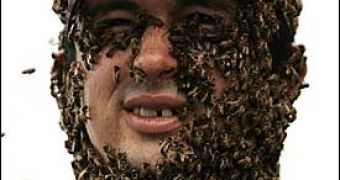The bee's universe is a tough monarchy, the proletariat has no say there. The queen honey bee decides the sex of her offspring, points a new research published in Behavioral Ecology, a finding that challenges the belief that queens are just 'egg laying machines' and that worker bees decide if the queen is going to deliver males or females.
During the mating flight, before founding the colony, the young queen mates with several partners, keeping their sperms which she will use for the rest of her life, bit by bit, as she produces eggs.
Males (drones) hatch from unfertilized eggs, and females (queen and workers) only from fertilized eggs. Thus sperm added to an egg means a female; if not, it will be a male, so that the queen should control the sex of new individuals.
However, entomologists accepted the idea that workers are the ones which do this. They build the chambers (cells) in which the queen deposits its eggs. Bigger cells will harbor males, as these larvae are bigger. Researchers had believed that the workers (which build the cells) can limit through the cells' size the number of male offspring delivered by the queen.
But the team led by Katie Wharton at Michigan State University in East Lansing places queens inside their colonies in specially built cages. The cage impeded the queen's access to the large drone producing cells, so that she could lay only worker eggs. 4 days later, the queen was freed in the hive, which had many empty cells of both sizes.
The queen preferred the larger cells, delivering about 3 times more drone eggs than she normally does, setting up the skewed forced gender ratio determined by her incarceration. "The workers and the queen clearly share control of honey bee demographics. It was like discovering a checks-and-balances government inside the hive.", said Wharton.
"The queen's ability to make "her own decisions" adds a new layer of complexity to life in the hive and raises questions about what stimuli the queen is responding to. Is she remembering how many eggs she has laid, can she sense how much sperm she has used, or is there some sort of chemosensory cue telling her how many drone larvae are in the cells?", said Lars Chittka, an entomologist at Queen Mary University in London.

 14 DAY TRIAL //
14 DAY TRIAL //